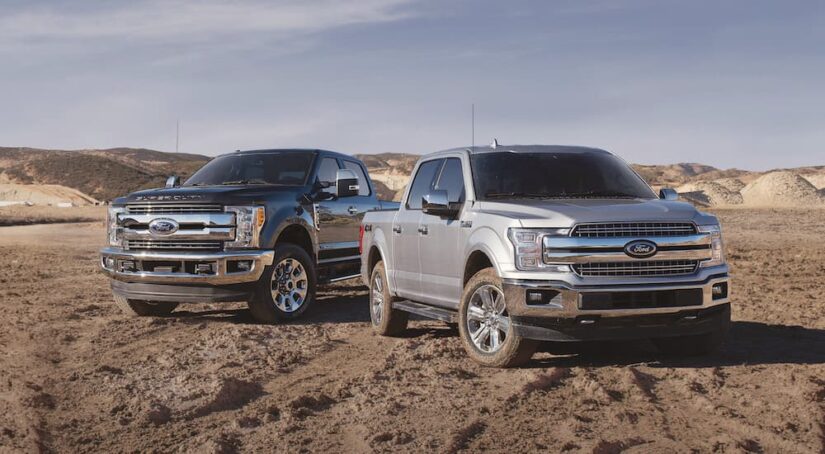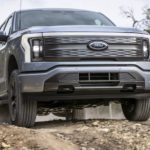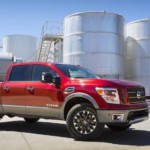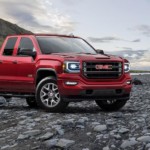As America’s best-selling truck for nearly 50 years, the Ford F-150 pickup has established itself as one of the most legendary vehicles ever made. Between the high sales numbers and the truck’s proven reliability (the consensus among experts is that a well-maintained Ford F-150 can easily last 200,000 miles), there are a lot of used F-150s available for those who want to get great value on an excellent truck.
When buyers are looking at a used Ford for sale, the F-150 trucks dealerships offer come down to two main choices: the 13th-generation F-150 made from 2015 to 2020 and the 14th-generation F-150 manufactured since 2021. Although both bear the F-150 badge, some notable differences might impact what you purchase. Today, I want to compare the 13th-generation and 14th-generation F-150 regarding powertrain, tech, bed size, and other options so buyers can choose the one that is right for their needs.
Price vs Longevity
First, I want to quickly address an important point that applies to any used truck, including the F-150. Older model years like the 13th-generation F-150 are going to cost less upfront. According to CarEdge, a Ford F-150 depreciates by an average of 54% in the first five years, with rates slowing after that. That immediately makes 13th-generation F-150s attractive to people on a budget.
That said, you’ll likely get more miles out of a newer 14th-generation F-150 because it usually has fewer miles. The average light truck owner puts a little over 11,000 miles on their vehicle per year. Based on that 200,000 lifespan estimate from earlier, a four-year-old F-150 with 45,000 miles on the odometer should give you more life than an eight-year-old truck with 90,000 miles. This balancing act is something every prospective used F-150 buyer must consider.
Engines and Powertrain
Now it’s time to get into the nuts and bolts of these trucks. When including updates and a 2018 mid-cycle refresh, the 13th-generation F-150 was offered with a whopping 10 different engines throughout its six-year tenure. I could write an entire article just about the engines, but here’s a quick summary. In terms of power, options ranged from a 282 hp, 3.5L Cyclone V6 to a 450 hp, 3.5L twin-turbo V6. In 2018, Ford also introduced a PowerStroke turbo-diesel V6 with 250 hp and 440 lb-ft of torque.
The 14th-generation F-150 pares things down a bit with seven engines. (I’m not including the F-150 Raptor R, which is its own beast.) The power output range doesn’t change much, though non-Raptor owners get the benefit of a 430 hp hybrid-electric powertrain. On this note, there are a lot more fueling choices. While the 13th-generation truck consisted of nine gas-only engines and one diesel engine, the 14th-generation consists of three gas-only engines (2.7L EcoBoost V6, 3.5L EcoBoost V6, and 3.5L EcoBoost high-output, two flex-fuel engines (3.3L Cyclone V6 and 5.0L Coyote V8), one hybrid engine (3.5L PowerBoost V6), and one diesel engine (3.0L PowerStroke V6, discontinued following the 2021 model year).
The transmission lineup was also simplified for the 14th generation. In the previous generation, some engines had a six-speed 6R80 automatic transmission while others had a 10-speed 10R80 SelectShift automatic introduced in 2017. Since 2021, the 10R80 transmission has been universal.
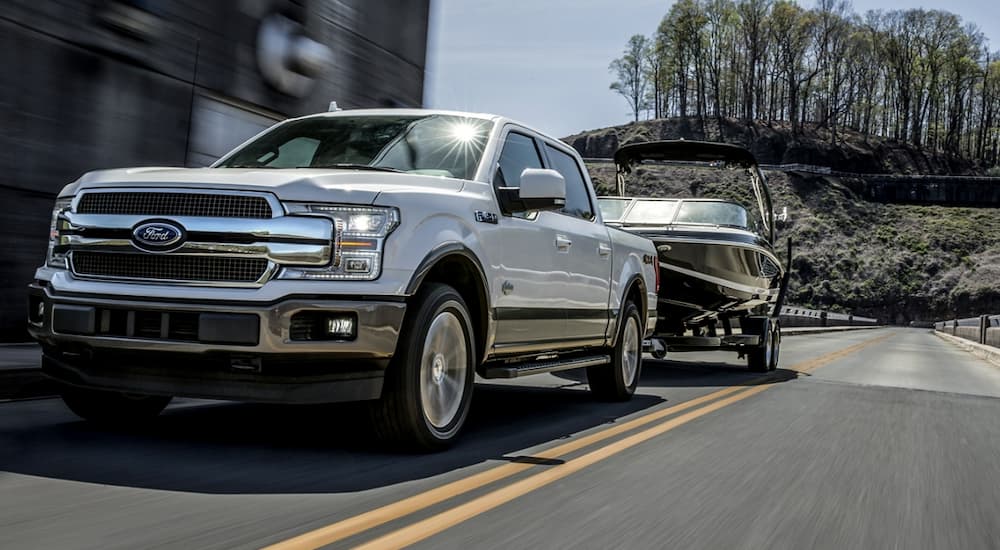
Towing and Payload
Hauling equipment, luggage, and adventure goodies is necessary for any truck. While you can’t go wrong with any F-150, it’s worth noting the 14th generation has a slight edge. Starting with towing, the highest capacity you could get from a 13th-generation F-150 was 13,200 lbs. Early editions of the 14th-generation F-150 reached a 14,000-lb towing capacity, with more recent models capped at 13,500 lbs. The minimum towing capacity is also higher. The 3.3L V6 engine could only muster a 7,700-lb hauling capacity in the 13th generation, but reaches 8,200 lbs for the 14th generation thanks to a stronger suspension.
The maximum payload is a little trickier. The 13th-gen F-150 could reach 3,270 lbs of passengers and cargo. The 2021 to 2023 years of the 14th-generation F-150 got as high as 3,325 lbs, but with the 2024 refresh, payload capacity falls to 2,445 lbs. This is because Ford removed the Heavy-Duty Payload Package upgrade and increased the truck’s curb weight. If you need to carry the biggest loads, a 13th-generation or early 14th-generation F-150 (or a Super Duty) is your best bet. These specs vary depending on the engine, truck bed, and other factors, so check online or with the dealership to confirm the numbers.
Truck Beds and Cabs
Over the past decade, this is one area where almost nothing has changed about the F-150. There continue to be three bed options: a 5.5-foot short bed, a 6.5-foot regular bed, and an eight-foot long bed. The cab sizes also remain the same, with the Regular, SuperCab, and SuperCrew. Only one change of significance occurred here. Beginning in 2024, owners could no longer pair the eight-foot bed with the SuperCab. For most used truck buyers, though, this won’t be an issue.
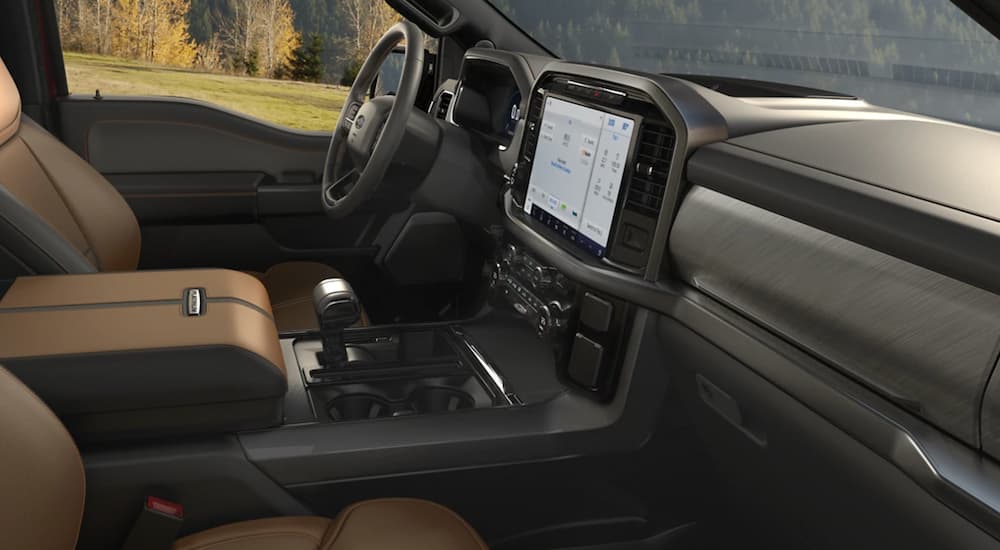
Technology
The technology front has arguably seen the biggest evolution between the 13th and 14th-generation F-150s. There were plenty of intra-generational updates, too, adding infotainment and safety performance. I thought it best to put together a quick timeline of notable technological changes and additions.
2015
The 13th-generation F-150 debuts with most trims sporting an eight-inch touchscreen, Bluetooth, voice activation, and available SD Card-based navigation, HD Radio, and satellite radio. The XL and XLT trims do not have this screen, and Bluetooth is optional. Most trucks have four- and seven-speaker systems, with a Sony 10-speaker system on premium trims. Optional driver assistance includes blind-spot monitoring, adaptive cruise control, and a 360-degree parking camera.
2018
Android Auto and Apple CarPlay become optional on the XL/XLT and standard on all other trims. Higher F-150 models now have standard front USB ports. They remain optional on the XL/XLT. The high-end sound system switches from Sony to Bang & Olufsen. Pre-collision assistance, pedestrian detection, and lane-departure warnings are added to the list of available safety features.
2021
With the 14th-generation F-150, the eight-inch screen and Android Auto/Apple CarPlay become standard on the lower trims, though Bluetooth is no longer offered for them. Higher models now get a 12-inch touchscreen with a standard navigation system (which switches to internet based) and a wireless charging pad. A WiFi hotspot is now available on all trims. A six-speaker sound system becomes the new baseline with available Bang & Olufsen systems that can reach 18 speakers. Finally, Ford introduced its Pro Power Onboard power generation system for select trims and made pre-collision assistance and lane-departure warnings the first standard active driver assistance options.
2024
The 12-inch touchscreen becomes universal, as does a 12-inch digital gauge cluster that can offer dual views. A head-up display is now available on certain trims, as is a Pro Access Tailgate. Active safety expands greatly with blind-spot monitoring, automatic emergency braking, lane-keeping assistance, and cross-traffic alert added to the standard list. Several other systems are available, including BlueCruise 1.2 hands-free driving.
Which Ford F-150 Generation Should You Buy?
As I said earlier, you can’t really go wrong when choosing a used Ford F-150. Mechanically, the 13th and 14th generations are similar, with the 13th generation having more diesel engine availability and the 14th generation offering more fueling options. More recent models provide clear tech and towing advantages if these are important to you whereas older models have the collective upper hand on payload. Since the bed and cab sizes haven’t changed in a decade, you can get whatever configuration you want.
Regardless of what F-150 you’re looking at, be sure to get a complete vehicle history so you know whether the truck has experienced any issues. You’ll also want to inspect its current condition or buy from a dealer that does these checks. Reputable dealers also offer a warranty or guarantee so you can feel confident you’re getting a truck that lives up to the F-150 name.
